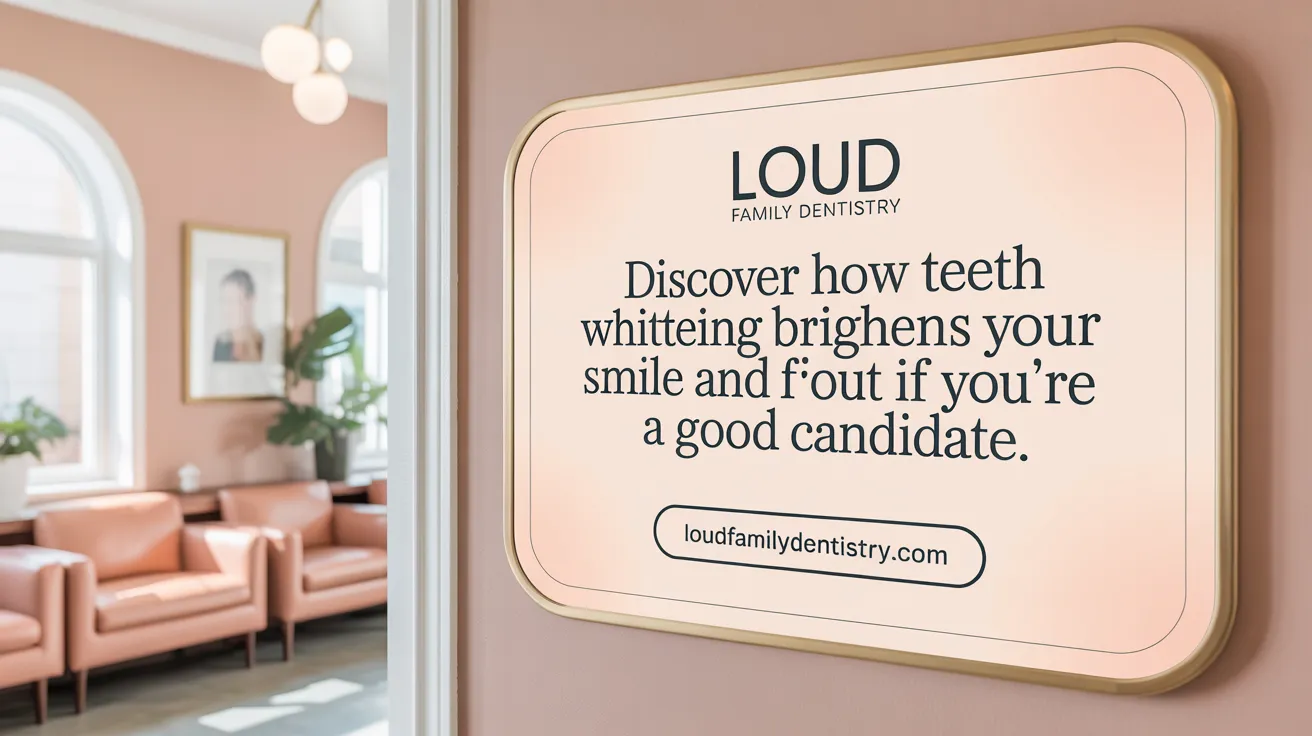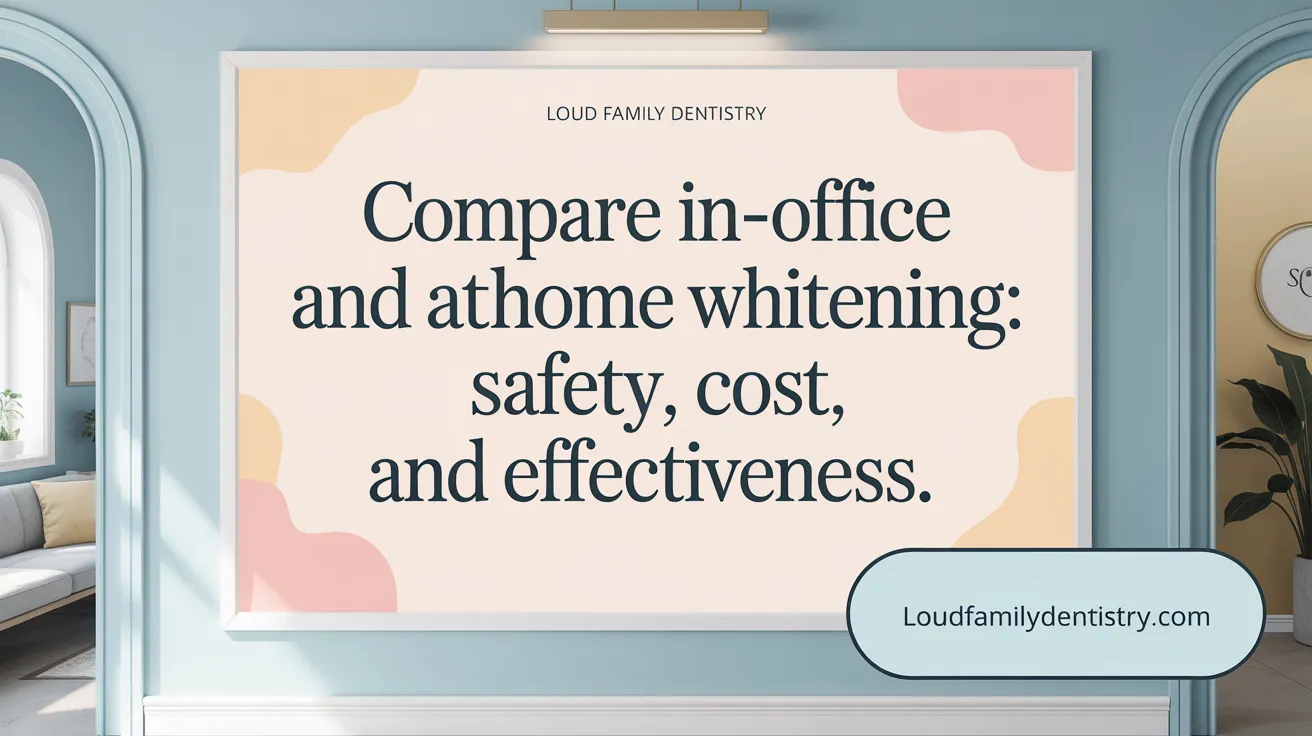Introduction to Teeth Whitening
What Is Teeth Whitening?
Teeth whitening is a popular cosmetic dental procedure designed to brighten your smile by lightening the shade of your teeth. It works by using bleaching agents like hydrogen peroxide or carbamide peroxide, which penetrate the enamel to reduce stains and discoloration.
Why Do People Choose Whitening?
Many seek teeth whitening to tackle common issues such as discoloration from aging, coffee, tea, red wine, smoking, or certain medications. It helps remove surface stains and improve the overall appearance of natural teeth, contributing to a confident, healthy smile.
Community Dental Clinics and Whitening Services
Community-focused dental clinics, like those in Shreveport, provide teeth whitening services with a personal approach. These clinics offer professional whitening options using the latest technology, making this cosmetic treatment accessible and safe for patients of all ages while emphasizing dental health and patient education.
Understanding Teeth Whitening: How It Works and Who’s a Candidate

How Does Teeth Whitening Work?
Teeth whitening is a popular cosmetic dental procedure that uses bleaching agents like carbamide peroxide or hydrogen peroxide. These chemicals penetrate the tooth enamel and break down stains through oxidation, making teeth appear lighter. Whitening acts both by bleaching internal discolorations and removing superficial stains.
What Causes Tooth Discoloration?
Tooth discoloration can be extrinsic or intrinsic. Extrinsic stains occur on the surface from coffee, tea, tobacco, and certain foods, while intrinsic stains develop inside the tooth due to aging, trauma, medications, or enamel thinning. Understanding tooth discoloration helps determine if whitening will be effective.
Who Is a Good Candidate for Whitening?
Whitening works best for individuals with natural teeth showing age-related darkening, food or tobacco stains, and healthy enamel. Those with intact, unrestored teeth usually see the best results. People with sensitive teeth, gum disease, or restorations like crowns and veneers may not benefit as whitening agents do not affect these materials. See Candidates for teeth whitening for more details.
Limitations of Whitening
Limitations of tooth whitening include that teeth whitening is less effective on dental work such as crowns, veneers, or fillings since bleaching agents cannot change their color. Severe discoloration or enamel erosion might require alternative cosmetic options like veneers or crowns to achieve desired results.
What About Community Dental Clinics?
Community-Focused Dentistry clinics often offer a broad range of dental services including preventive care, restorative treatments like Dental Crowns Service, Dental Implants Shreveport, pediatric dentistry, and cosmetic procedures such as Teeth Whitening in Shreveport. They emphasize personalized, accessible care for patients of all ages, promoting overall oral health in the community.
Professional vs. At-Home Whitening Options: Safety, Effectiveness, and Costs

What Are the Main Differences Between In-Office Bleaching and At-Home Treatments?
In-office bleaching is performed by dental professionals using high-strength whitening agents such as hydrogen peroxide teeth bleaching or carbamide peroxide bleaching. This treatment typically takes about 60 to 90 minutes and can lighten teeth by up to eight shades quickly. At-home treatments provided by dentists include custom-made whitening trays and lower-concentration bleaching gels worn over days or weeks. These dentist-supervised options usually offer more gradual whitening results but ensure safety and effectiveness (Professional teeth whitening vs At-home Kits).
Are ADA-Approved Bleaching Agents Safe to Use?
ADA-approved whitening products are rigorously tested to be safe and effective when used as directed. They mainly use peroxide compounds to bleach teeth internally by oxidizing pigmented molecules (How teeth whitening works). Temporary side effects like gum irritation from whitening and tooth sensitivity after whitening may occur but generally resolve quickly. Professional supervision helps minimize risks and prevents damage to enamel and gums (Teeth whitening safety.
What About Home Kits and Over-the-Counter Whitening Products?
Home kits and OTC whitening products are convenient and more affordable but tend to have lower concentrations of bleaching agents, leading to slower or less noticeable results. Without professional guidance, users risk improper application, overuse, and increasing sensitivity or gum problems (At-home teeth whitening options). Some products without ADA approval may be ineffective or even harmful, so consulting a dentist before use is recommended (Consulting a dentist for whitening.
How Do Costs Vary Among Whitening Options?
Professional in-office whitening typically costs between $500 and $1,000 or more depending on the clinic and technology used, such as laser teeth whitening or LED activation. Dentist-supervised at-home kits usually range from $100 to $200. Over-the-counter kits are generally the least expensive, often costing around $20, but effectiveness varies widely (Cost of professional whitening). Prices reflect the strength of the bleaching agents, customization, and added safety measures (Cost of in-office teeth whitening).
Why Is Professional Consultation Important Before Whitening?
A dentist evaluates your dental health, identifies the causes of teeth staining and types of discoloration, and determines your suitability for whitening (Candidates for teeth whitening. They help select the safest and most effective whitening method, guide proper use of products, and address any sensitivity or gum issues. Dental clinics ensure comfort by creating welcoming environments, using gentle techniques, and providing personalized care (Dentist in Shreveport). This comprehensive approach improves outcomes and minimizes risks associated with teeth whitening safety.
The Whitening Procedure: What to Expect During In-Office Treatments

Initial Dental Assessment Including Plaque Removal and Shade Recording
Before starting the whitening treatment, your dentist will conduct a thorough assessment to ensure your teeth are suitable for whitening. This includes removing any plaque to improve the effectiveness of the bleaching agents. The natural tooth color is recorded using a shade guide to monitor progress and set realistic expectations. (Professional teeth whitening assessment)
Application of Bleaching Agents Using Protective Measures
The whitening gel, usually containing hydrogen peroxide or carbamide peroxide, is carefully applied to your teeth. To protect your gums and tongue, dental professionals often use protective barriers like rubber dams. This safeguards soft tissues from irritation. (Professional teeth whitening (proper use of protective barriers during whitening)
Typical Duration and Use of Activating Lights
The in-office whitening session typically lasts between 60 to 90 minutes. During this time, some treatments use UV or blue LED light to activate the bleaching agents, accelerating the whitening process and enhancing results. (UV and blue light activation
Expected Results and Shade Improvement
Professional whitening can lighten teeth by up to eight shades, significantly improving the brightness of your smile. While immediate dramatic changes are possible in one session, the lasting effect depends on your dental habits and lifestyle. (Professional teeth whitening results
Common Temporary Side Effects
Post-treatment, you may experience temporary tooth sensitivity and mild gum irritation. These side effects are usually brief and manageable with proper care and products recommended by your dentist. (Side effects of teeth whitening)
Aftercare and Maintaining Your Whitened Smile

Crucial First 48 Hours After Whitening: Avoiding Stain-Causing Foods and Beverages
Immediately following a Teeth whitening aftercare instructions, your teeth are especially vulnerable because their pores are open. During the first 48 hours, it is important to avoid dark-colored and acidic foods or drinks that could stain your freshly whitened teeth. Foods and beverages such as coffee, red wine, dark tea, soy sauce, berries, chocolate, and certain sauces should be off limits to maintain your bright smile.
Foods and Drinks Recommended and to Avoid Immediately Post-Treatment
Safe foods to consume after whitening include bananas, chicken, fish, broccoli, cauliflower, celery, light beer, white wine, green tea, milk, pasta, pears, plain yogurt, quinoa, turkey, water, and clear juices. Avoid hot or cold foods that might irritate sensitive teeth. Continuing proper oral hygiene during this time—such as gentle brushing with fluoride toothpaste and avoiding colored mouthwashes—helps minimize sensitivity and supports whitening results.
Long-Term Care Tips: Oral Hygiene, Whitening Toothpaste, Limiting Staining Habits
To prolong your whitening effects, maintain good daily oral hygiene with flossing and brushing twice a day. Using whitening toothpaste once or twice a week can help sustain whiteness without causing damage. Limiting your consumption of coffee, tea, red wine, and other staining items will prevent premature discoloration. Smoking cessation is highly recommended as tobacco dramatically compromises whitening results.
Recommendations for Touch-Up Treatments and Regular Dental Checkups
Periodic touch-up treatments, either professionally guided or at-home kits, can be scheduled typically once a year or every two years depending on lifestyle and diet. Regular dental checkups ensure your teeth and gums remain healthy and allow dental professionals to monitor the durability and effectiveness of your whitening treatment.
Lifestyle Advice Including Quitting Smoking to Prolong Whitening Results
Adopting a lifestyle that supports oral health is essential for lasting whitening benefits. Quitting smoking not only improves your overall health but also keeps teeth brighter for longer. Additionally, drinking plenty of water and avoiding excessive acidic foods helps protect enamel and maintain your bright smile.
What Are the Benefits of Choosing a Dental Clinic That Serves Patients of All Ages?
Choosing a Family Dentist in Shreveport offers comprehensive care tailored to your family’s unique needs in one convenient location. Such clinics provide skilled treatment plans for children, adults, and seniors—including preventive care and cosmetic procedures like whitening. This continuity supports early problem detection, simplifies scheduling, and fosters strong patient-dentist relationships focused on long-term oral health and a confident smile.
Risks, Side Effects, and When to Consult Your Dentist

What Temporary Side Effects Can Occur After Whitening?
Many people experience minor side effects such as tooth sensitivity after whitening and gum irritation from whitening. These effects are usually temporary and resolve within a few days. Sensitivity happens because whitening agents like hydrogen peroxide teeth bleaching penetrate the enamel, causing mild irritation.
What Are the Risks of Unregulated or Improper Whitening Treatments?
Using unregulated whitening products or treatments performed by untrained individuals can increase risks and safety in tooth whitening, including gum damage, uneven whitening, or long-term enamel harm. Only regulated dental professionals are legally authorized to carry out teeth whitening safety.
Who Should Avoid Whitening Treatments?
Certain groups are advised against teeth whitening. This includes pregnant or nursing women, individuals with extensive dental restorations such as crowns or veneers, and those with untreated dental issues, gum diseases, or highly sensitive teeth. These are documented as whitening contraindications.
Why Is Professional Evaluation Important?
A thorough dental assessment before whitening helps ensure the treatment is safe and appropriate for your teeth. Dentists evaluate enamel health, detect cavities or gum problems, and determine if whitening will be effective based on the causes of teeth discoloration.
How Do Dental Professionals Ensure Safe Whitening?
Dental practitioners use controlled bleaching with carbamide peroxide or hydrogen peroxide bleaching agents under supervision, apply proper use of protective barriers during whitening for gums and soft tissues, and provide tailored advice to minimize side effects of teeth whitening. Their expertise allows them to offer support throughout the professional teeth whitening process and promptly address any complications.
Brighten Your Smile Safely with the Right Whitening Approach
Professional Teeth Whitening: Benefits and Considerations
Professional teeth whitening is an effective way to brighten your smile safely, especially when conducted by trusted dental providers. Using bleaching agents like hydrogen peroxide or carbamide peroxide, this method can lighten teeth by several shades, providing noticeable results in a short time.
Consultation Is Essential
Before whitening, consulting a qualified dentist ensures the treatment suits your dental health and staining type. Professionals assess conditions like enamel sensitivity or restorations and tailor the procedure to your needs, minimizing risks such as gum irritation or tooth sensitivity.
Maintaining Your Whitened Smile
Good aftercare and lifestyle choices are crucial for lasting results. Avoiding stain-causing foods and drinks, maintaining excellent oral hygiene, and following your dentist’s advice help preserve whiteness and overall oral health. Periodic touch-ups may also be recommended by your dental provider to sustain your bright smile.
